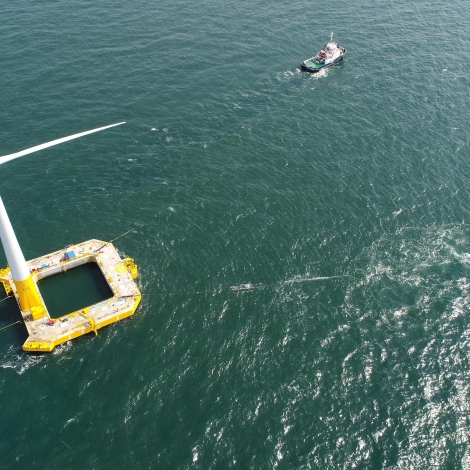A big chunk of the cost of offshore wind energy generation is sunken during the construction phase into expenses that have little to do with materials or manufacture. Those include installation, logistics and commissioning. In fact, about 20-30 percent of the capital expenditure on the project goes toward contending with technical and geographic factors. We’re talking about things like poor port infrastructure, the availability of specialized vessels needed to haul the turbines, the distance from the wind farm to shore, accessibility, water depth, the condition of the seabed, and even the weather. Turbulent weather can be a particularly hard-to-predict setback, throwing a wild card into the mix during the construction phase.
To avoid delays and going over budget, it’s important to identify what’s needed early on. This means planning out the supply chain.
Juggling multiple factors and potential setbacks is complicated, but now there may be help. UK Researchers at the University of Edinburgh in Edinburgh, and the University of Exeter in Penryn built a modeling tool for planning the installation of floating offshore wind projects. The modeling tool is built on the back of existing software, ForeCoast® Marine, which is developed by the UK firm JBA Consulting and issued as software as a service.
Floating offshore wind is a subset of all offshore wind generation and the difference is… it floats. That means the generators can be installed in deeper water, opening up more areas further from shore that are suitable for wind energy. Fixed-bottom generators can be built in water up to 60 meters of depth, while floating wind energy generators can operate in deeper water of 60-1000 meters. Floating designs include spar-buoy and semi-submersibles with high-capacity electricity generation of 7-15 MW.
Let’s put offshore wind and its floating variants in context. In 2020, the world had 20 GW of offshore wind capacity. By 2030, the Global Offshore Wind Alliance aims to boost worldwide capacity to 380GW. Meanwhile, floating offshore wind capacity sits at 132 MW worldwide, and it’s expected to grow to 54 GW by 2030.
The UK researchers evaluated the logistics and installation of semi-submersible floating wind platform energy generators. Their analysis covered delivery and storage at a port, assembly on a floating platform, and towing the turbine to the site and connecting it to a mooring system. Their research suggests that modeling tools can reduce installation costs and delays and identify bottlenecks.
“The floating offshore wind Transport and Installation (T&I) model and simulation tool provides a high-level representation of real marine operations and offshore logistics,” Susana Torres, a research engineer with the Industrial Doctoral Centre for Offshore Renewable Energy at the University of Edinburgh in Edinburgh, UK, told Engineering for Change by email.
“Each project requires specific logistics scenario analysis to determine the cost-effective installation methods and construction durations,” Ms. Torres says.
Read the open-access paper:

